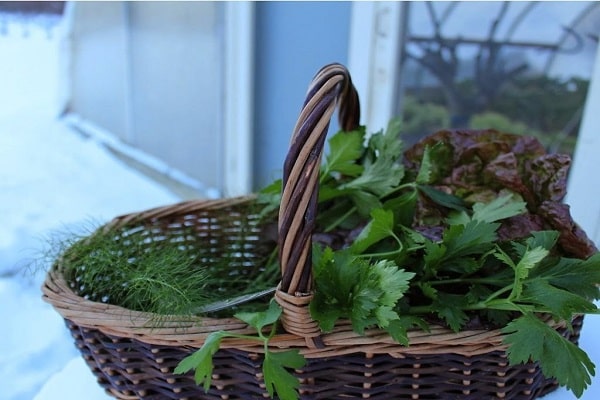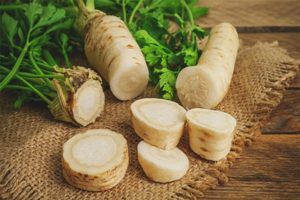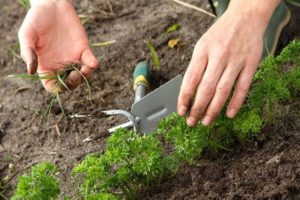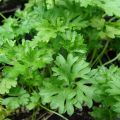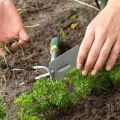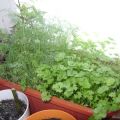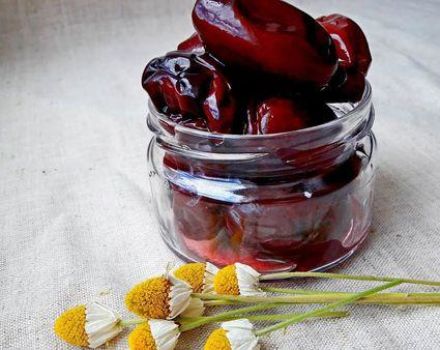How to grow and care for parsley in a greenhouse, how much it grows and what is the yield
Parsley contains vitamins and minerals. It is not only added to various dishes, but also used in medicine and cosmetology. In summer it grows well in garden beds, and in winter it can only be found in stores. It's not worth talking about the benefits of this parsley, because it is not there. For rapid growth, entrepreneurs add nitrates and over-fertilize the soil.
To consume nutritious greens consistently, you need to grow parsley in a greenhouse.
The specifics of growing parsley in a greenhouse
It is not difficult to grow parsley along with other herbs, a lot of effort is not spent on the process, and the harvest will not be long in coming. The plant is characterized by resistance to short-term frosts and in winter it feels good if the following conditions are met:

- if the greenhouse is not heated and it is not too cold outside, then parsley can be grown in autumn until December;
- in heated greenhouses, botanists do not recommend planting greenery until mid-January.
During the period of foliage, parsley needs a warmth of +12 degrees Celsius. When heated to +20 degrees, the culture feels discomfort, and in the heat, the leaves begin to fade. Therefore, it is necessary to protect the greenery from direct sunlight.
In order for parsley to please with its splendor, taste and health in winter, you need to know:

- Although the plant does not tolerate a lot of sun, it still requires lighting for itself, because the daylight hours in winter are shorter than in summer. It is recommended to create artificial light for better growth.
- Parsley is watered after the soil dries up, but better - after cutting the greens.
- For stable growth, moisture is needed above 75%.
- Temperature changes have a bad effect on the condition of the plant.
- To maintain favorable conditions, the greenhouse must be ventilated.
Parsley is undemanding to the ground. It is better to plant greens on moderately fertilized soils, light loamy or sod-podzolic. Too heavy soil can ruin the root system.
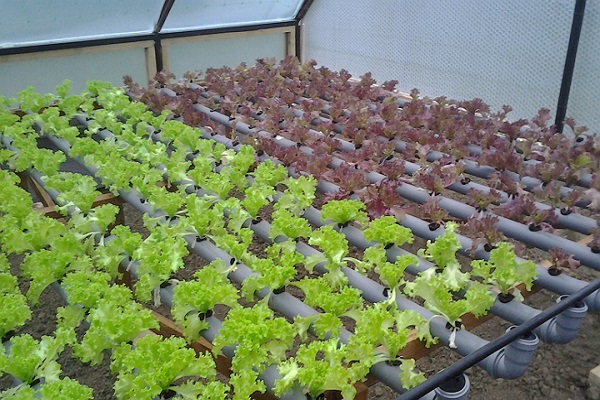
What type and variety to choose
There are two types of culture:
- Root. It is characterized by a thick and dense rhizome, used for pickling and sauces. Greens are also used for food, but they cannot be cut off until the roots are ripe.
- Leafy. This type of plant uses only foliage, which tastes much softer than that of root parsley... It reaches a height of up to 60 cm, a diameter of up to 30 cm.
To choose the perfect variety for yourself, you need to determine what is more important: fresh and beautiful greens or useful trace elements contained in parsley roots.
Leaf parsley is classified into the following varieties:
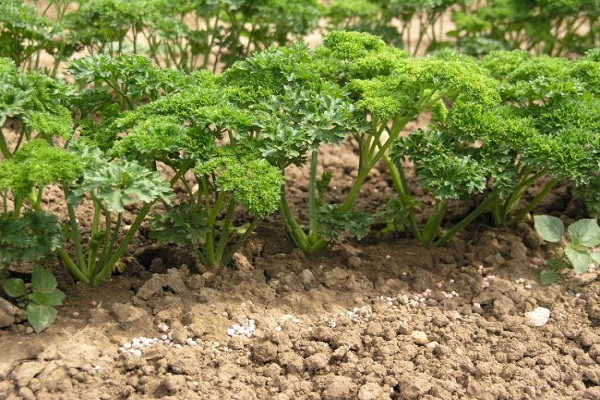
- Breeze. It is mid-season, characterized by long-term freshness after harvesting. Greens can be consumed even after 2.5 months.
- Moskrauh. It has a very beautiful appearance, it is used for food both dried and fresh. The plant yields quickly.
- Esmeralda. The variety belongs to the mid-season. One bush can weigh 50 g. Up to 30 leaves grow on the outlet. Can recover quickly after cutting.
- Bravo. Bred in Russia. This variety has a rather strong smell, and the petioles are arranged vertically.
The most popular varieties of root parsley are as follows:
- Yielding. Perfect for growing in winter.
- Bordovician. He ripens late. It is characterized by long-term storage and good yield.
- Berlin. The plant is distinguished by light yellow aromatic and tasty leaves. The variety is early maturing.
- Leafy. The outlet fits up to 60 leaves, for this quality is especially appreciated among gardeners.

Soil preparation
As with all plants, the yield of parsley depends on the quality of the soil. Before sowing greenery, you need to take care of the substances that future bushes will feed on. In this regard, organic fertilizers are introduced into the soil in advance, since autumn. In this capacity, top dressing with rotted leaves, manure or compost has proven to be excellent.
When planning winter sowing, the garden bed is prepared 14-21 days before the start of planting.
After the introduction of organic matter, the entire treated area is watered abundantly, then covered with polyethylene until the spring heat. In case of an acute shortage of humus in the ground, it is recommended to populate the greenhouses with earthworms, which will enrich the soil in just 2 months without the use of harmful chemical elements.
It is best to plant parsley in the places where cucumbers, tomatoes, onions and cabbage were grown last year.

Sowing features
If you plant dry seeds, then the first shoots appear in about a month and even a little later. This period can be halved if the seeds are pre-soaked for several days.
The process of growing greens is as follows:
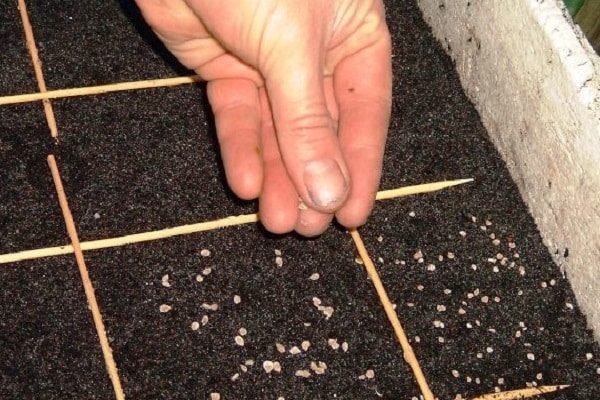
- Seeds are sown into the prepared soil at a distance of 5-10 cm and at a depth of 30 mm.
- Sowing is watered abundantly with water.
- The bed is covered with polyethylene, which is removed after the first shoots appear.
- Seedlings are weeded and thinned out.
Parsley is sown in greenhouses in April if there is no heating. In the opposite situation - from mid-January. There should be a constant temperature of 10-15 degrees inside. A lower value will freeze the roots, while a higher value will cause the leaves to turn yellow, dry out, and fall off. Therefore, experts advise installing a heater in the greenhouse.
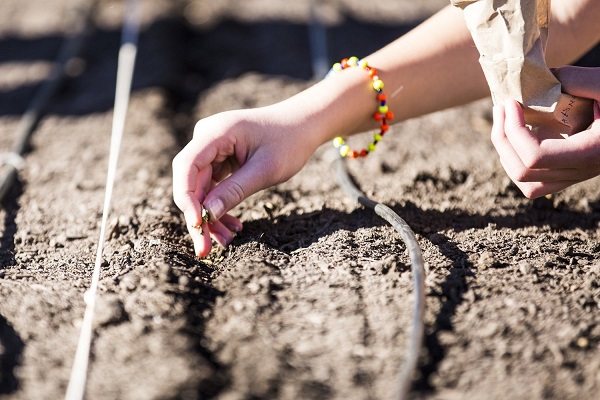
Greenhouse parsley care
To grow a good harvest of greenery, it is important to regularly water the beds in greenhouses and greenhouses, timely fertilize and remove weeds. Parsley is very sensitive to them, especially in the first stages of development, because its stems are able to stretch too much because of them. It is better to pull the weeds and loosen the soil at the same time the next day after watering.
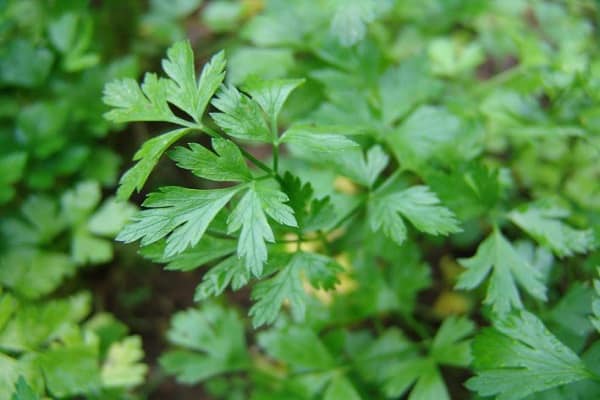
Watering
Parsley requires regular moisture, so excessive watering and, conversely, too scarce, should not be allowed. You need to know that each leafy plant variety needs more water than the root one.
Watering is recommended in the early morning before the onset of heat or in the evening at sunset. First you need to prepare the water, it should be soft, settled and warmed up to the temperature in the greenhouse.
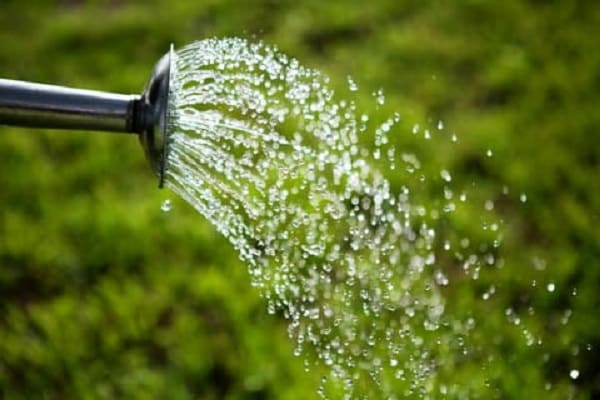
Top dressing
Fertilizers are required for different varieties of parsley:
- The leaf culture is fed twice with saltpeter, the consumption rate of which is 50-60 g per m22.
- Root - in the spring months it is supplied with mineral fertilizers, and during the period of root growth, potassium salt is added (50 g per m22) and superphosphate (70 g per m22).

Protection against diseases and pests
Parsley mainly suffers from powdery mildew, black rot, stubble, septoria and rust. Spraying with a copper-containing fungicide will help get rid of the misfortune.
To avoid encountering these infections, it is important to process the seeds before sowing, observe crop rotation, and remove plant and weed residues from the greenhouse in a timely manner.
Representatives of melon aphids, carrot flies, stem nematodes and carrot flies love to parasitize on parsley bushes. They fight insects with a strong soap solution or onion peel. It is also recommended to dust the plantings with red pepper or tobacco dust.

Harvesting
If you properly care for the crop, then parsley has a yield per 1 sq. m will be 1.5-2 kg per crop. How long can greens grow? Planting treated seeds will shorten the ripening period to 3 weeks. Planting dry seeds will lengthen it up to 1.5 months.
Root varieties are dug out before the first frost appears. The leaves are cut, and the roots are stored in a cellar, sprinkled with river coarse sand.
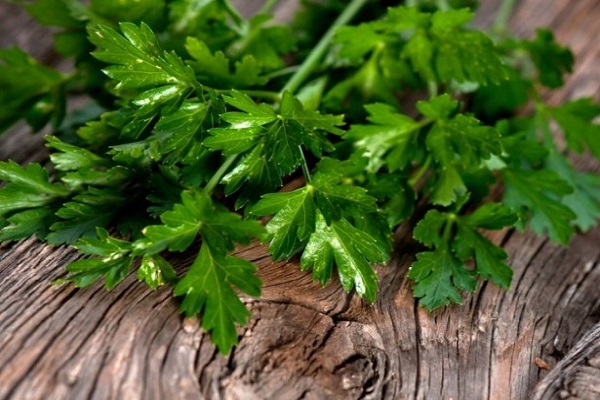
Greens that are grown in heated greenhouses and greenhouses are cut all year round. The crop is permissible both to dry and freeze in freezers.
Parsley is completely unpretentious and does not require much labor to take care of itself. It is beneficial to grow it all year round in greenhouses, thanks to which healthy and nutritious greens will be available constantly. It is important to observe the temperature regime, make additional fertilizing and remove weeds.
